Several have asked me to demonstrate how to use the site, so I'm going to give it a shot on this blog. (Click on the pictures to see them larger.)
1. Log on to biblestudytools.com and type in 2 John 1:10-11 under "search"
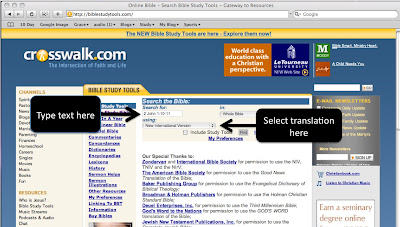
2. Select a translation (NAS or KJV with Strong's Words if you want to do Greek work), and then hit "find" next to the translation box.
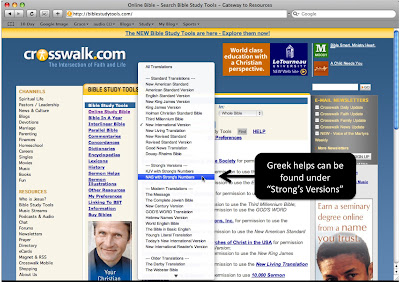
3. Click an underlined word to see its "Strong's page"
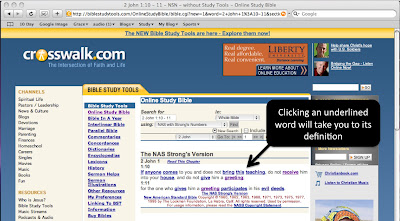
4. From this page, you can see the definition, other english words used for translation and see how many times the book is used in each book of the Bible. (Clicking a book will show you all the verses in that book.)
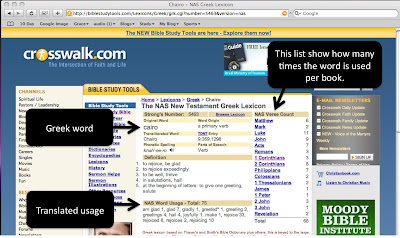
5. The highlighted word will show you how the greek word is used in other passages.
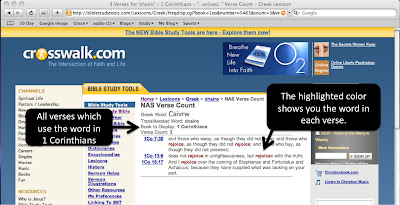
To some, tracing a word back to the greek could seem like a waste of time. While our translations are trustworthy, doing such work can help open the text up further and give you a better ability to understand the author's original intent. (LIFEgroup spoiler alert: Doesn't knowing the same word John uses for "greeting" is also translated "rejoice" give you a better idea what John meant?)
No comments:
Post a Comment